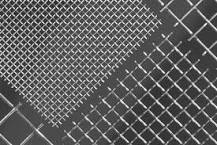Nov . 16, 2024 17:17 Back to list
hot-dipped galvanized iron wire factory
Hot-Dipped Galvanized Iron Wire Factory Ensuring Quality and Durability
In today's industrial landscape, the demand for robust and sustainable materials is ever-increasing. Among various options available, hot-dipped galvanized iron wire stands out for its extraordinary resilience, versatility, and longevity. This article examines the significance of hot-dipped galvanized iron wire, its manufacturing process, and the pivotal role that factories dedicated to its production play in meeting global demands.
Understanding Hot-Dipped Galvanized Iron Wire
Hot-dipped galvanized iron wire is produced by coating iron wire with zinc through a hot-dipping process. This method involves immersing the wire in molten zinc, which forms a thick, protective layer that shields it from corrosion and rust. This wire is favored in numerous applications, including construction, agriculture, fencing, and various industrial uses, thanks to its enhanced durability and resistance to environmental challenges.
The Manufacturing Process
The production of hot-dipped galvanized iron wire involves several critical steps, each designed to ensure the quality of the final product
1. Wire Drawing The process begins with wire drawing, where thick iron rods are drawn through progressively smaller dies to produce wires of desired diameters. This step ensures that the wire has the necessary tensile strength for various applications.
2. Cleaning Before galvanization, the wire must be thoroughly cleaned to remove any impurities, oils, or oxides. This cleaning process typically involves chemical solutions and mechanical methods, preparing the surface for optimal zinc adhesion.
3. Annealing The cleaned wire is then subjected to heat treatment known as annealing. This process eliminates internal stresses and improves flexibility, making the wire easier to work with during subsequent operations.
4. Hot-Dipping The heart of the manufacturing process lies in hot-dipping, where the clean, annealed wire is immersed in a bath of molten zinc at approximately 450°C (842°F). The zinc adheres to the wire and forms a metallurgically bonded layer, providing exceptional corrosion resistance.
hot-dipped galvanized iron wire factory

5. Cooling and Inspection After the hot-dipping process, the wire is cooled down, often in a controlled environment to maintain uniformity. The final step involves rigorous inspection for quality control to ensure that the wire meets industry standards.
The Role of Factories
Factories specializing in hot-dipped galvanized iron wire manufacture play a crucial role in the supply chain. They utilize advanced technology and skilled labor to produce high-quality wire that caters to diverse market needs. By adhering to international standards, these factories ensure that the products are fit for both domestic and export markets.
Moreover, factories invest in research and development to innovate and improve production processes. This can include enhancing efficiency, reducing waste, and exploring new applications for galvanized wire. Sustainable practices are increasingly emphasized, aligning with global initiatives for environmental conservation.
Applications and Market Demand
The versatility of hot-dipped galvanized iron wire means it finds use in various sectors. In construction, it is often used for reinforcing concrete, making wire meshes, and fabricating fences that endure harsh weather conditions. The agriculture sector employs galvanized wire for fencing livestock and supporting plants in gardens and greenhouses. Its utility extends into the manufacturing of wire ropes, springs, and other fabricated products essential in numerous industries.
As urbanization and industrialization continue to grow worldwide, the demand for hot-dipped galvanized iron wire is expected to rise. Factories must be prepared to scale production while maintaining the quality that customers expect.
Conclusion
In conclusion, hot-dipped galvanized iron wire factories are at the forefront of producing one of the most durable and versatile materials available today. Through meticulous manufacturing processes and a commitment to quality, these factories play a significant role in supporting various industries. As the need for reliable and long-lasting materials continues to grow, the significance of these manufacturing hubs will only increase, driving innovation and sustainability in the wire industry. By prioritizing quality and efficiency, hot-dipped galvanized iron wire factories are well-positioned to meet the ever-evolving demands of the global market.
-
High-Quality Steel Grating Solutions for Industrial Applications | Durable, Safety, Customization
NewsJul.13,2025
-
Advanced Solutions-CompanyX|Enterprise Efficiency&Cost Reduction
NewsJul.13,2025
-
Sustainable Manufacturing-EcoTech Innovations|Waste-to-Energy System&Zero Emissions
NewsJul.13,2025
-
Welded Wire Mesh- Buildings Wiremesh Co., Ltd.|Durable Construction Material&Industrial Strength Solution
NewsJul.13,2025
-
Smart Production Solutions-Example Corp|AI Automation&IoT Monitoring
NewsJul.13,2025
-
Advanced Industrial Solutions-Advanced Industrial Solutions|Manufacturing Efficiency&Productivity
NewsJul.13,2025

